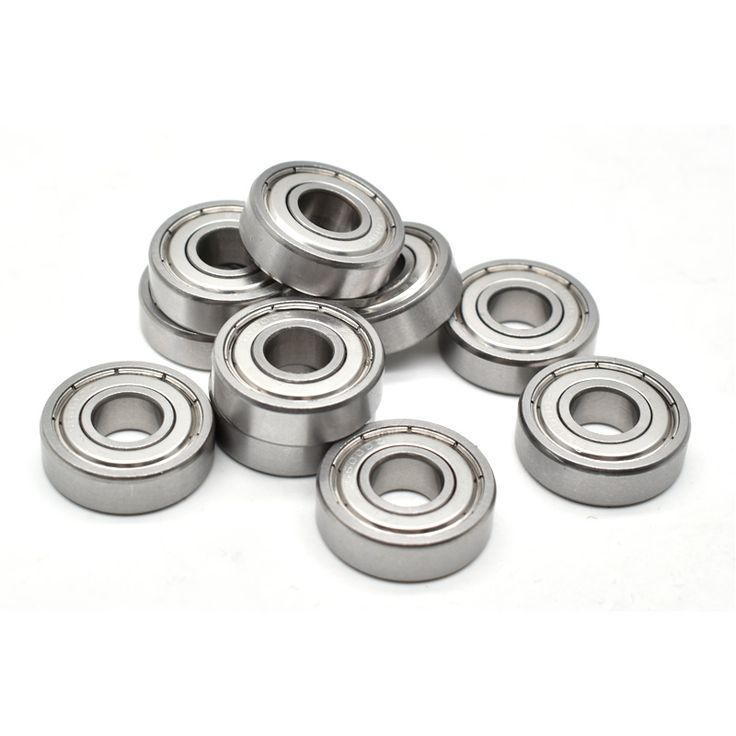Bearing seal RZ refers to a low-friction non-contact seal with a steel plate-lined synthetic rubber on one side of the bearing. The following is a detailed introduction from the aspects of its structural characteristics, advantages and disadvantages, and application scenarios:
✸ Structural characteristics
○ Non-contact design: The seal ring does not contact the inner ring of the bearing, and there is a certain gap between them. Generally, the maximum sealing gap is 0.2mm.
○ Rubber sealing lip structure: It usually has multiple sealing lips, such as the main lip axially contacting the labyrinth seal groove, and the two auxiliary lips for radial gap sealing. Some will also optimize the main lip angle, extend the auxiliary lips, etc. to enhance the sealing effect.
○ Synthetic rubber with steel plate lining material: Synthetic rubber is used as the main material, and the steel plate is lined inside. It has the flexibility and sealing performance of rubber, and the strength and stability of the seal ring are enhanced by the steel plate.
✸ Advantages
○ Low starting torque: Since the seal ring does not contact the inner ring of the bearing, the friction torque at startup is small, and the heat generation is also small, which can effectively reduce energy loss, improve the energy efficiency of the equipment, and make the bearing easier to start and operate.
○ Relatively low requirements for manufacturing precision: Compared with some contact seals or high-precision sealing structures, RZ seals have lower requirements for the manufacturing precision of the sealing ring and the sealing labyrinth groove, thereby reducing production costs.
○ Good dustproof effect: The labyrinth seal structure can effectively prevent dust, impurities and other particles from entering the bearing, protect the rolling elements and raceways of the bearing, and extend the service life of the bearing.
○ Adaptable to higher speeds: The non-contact design prevents excessive friction and heat accumulation between the sealing ring and the inner ring when the bearing rotates at high speed, so it can adapt to higher speed conditions, and the limit speed can reach the limit of open bearings.
✸ Disadvantages
○ Poor waterproof performance: The existence of the sealing gap and the non-contact structure make it less resistant to muddy water, water vapor, etc., and cannot effectively prevent water and moisture from entering the bearing. It is not suitable for use in humid, watery or water vapor environments.
○ High requirements for the shape of the sealing groove and the sealing ring: In order to ensure the sealing effect, the main lip and the sealing groove need to have a high degree of precision. The shape deviation of the sealing groove and the sealing ring may cause the sealing performance to deteriorate.
○ Not suitable for long-term immersion operation: In some application scenarios where the bearing needs to be immersed in liquid for a long time, the RZ seal cannot meet the requirements because water may enter the bearing through the sealing gap and cause damage to the bearing.

What’s the difference between RZ and RS?
*Different sealing materials
RS: It is a material with synthetic rubber or polyurethane on one side.
RZ: It is a material with synthetic rubber lined with steel plate on one side.
*Different sealing methods
RS: It is a contact seal, and the sealing ring of the bearing contacts the inner ring of the bearing.
RZ: Non-contact seal, the sealing ring of the bearing does not contact the inner ring of the bearing.
*Different limit speeds
RS: Because there is friction between the sealing ring and the inner ring, the limit speed is lower than that of RZ.
RZ: The sealing ring does not contact the inner ring, and can reach the limit of open bearings.
*Different sealing effects
RS: The sealing ring is in close contact with the inner ring, has a better sealing effect, and the structure is like an oil seal effect.
RZ: The sealing ring does not contact the inner ring, and there is a gap. It only plays a dust-proof role, and is generally used with an oil seal device.